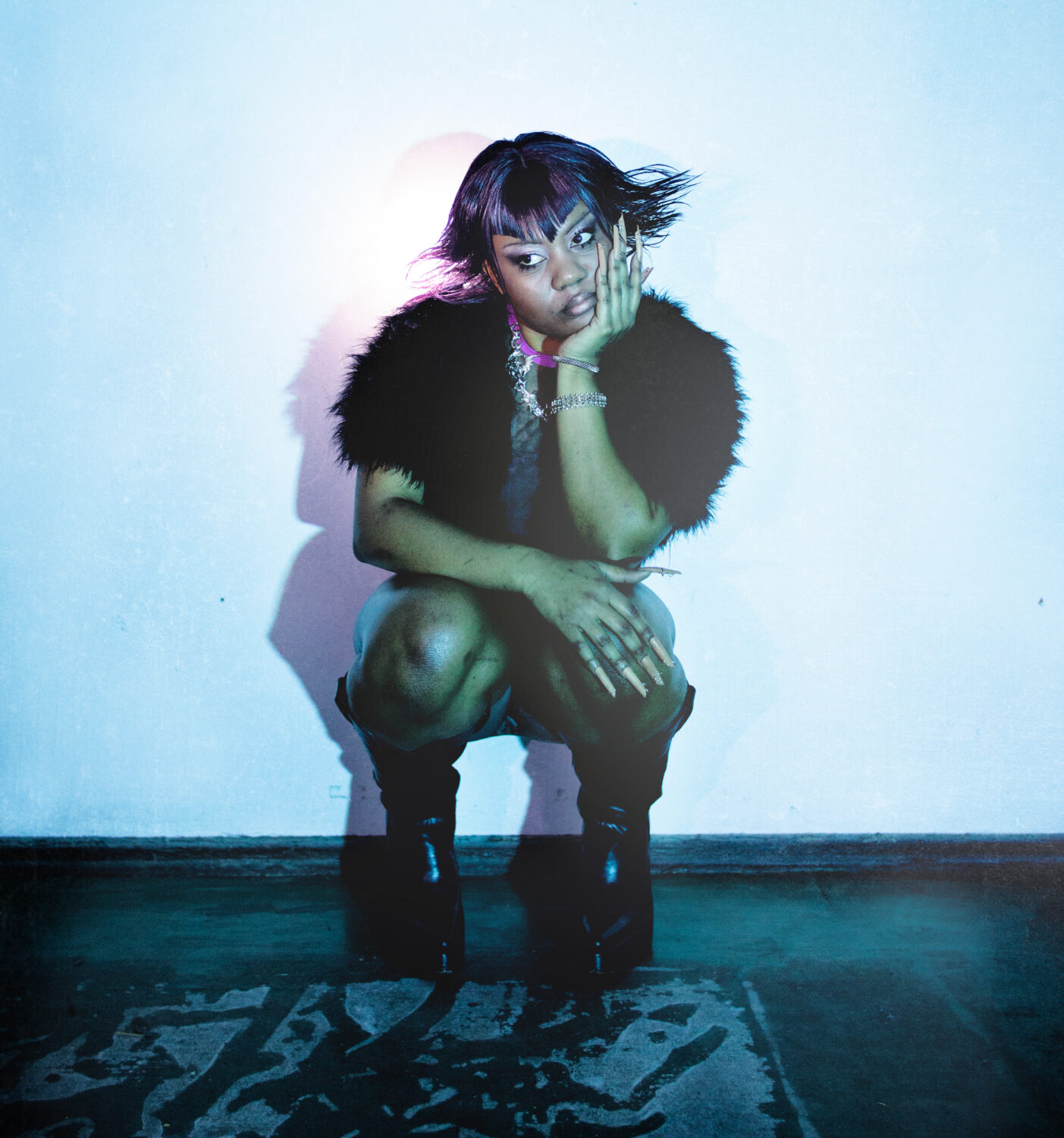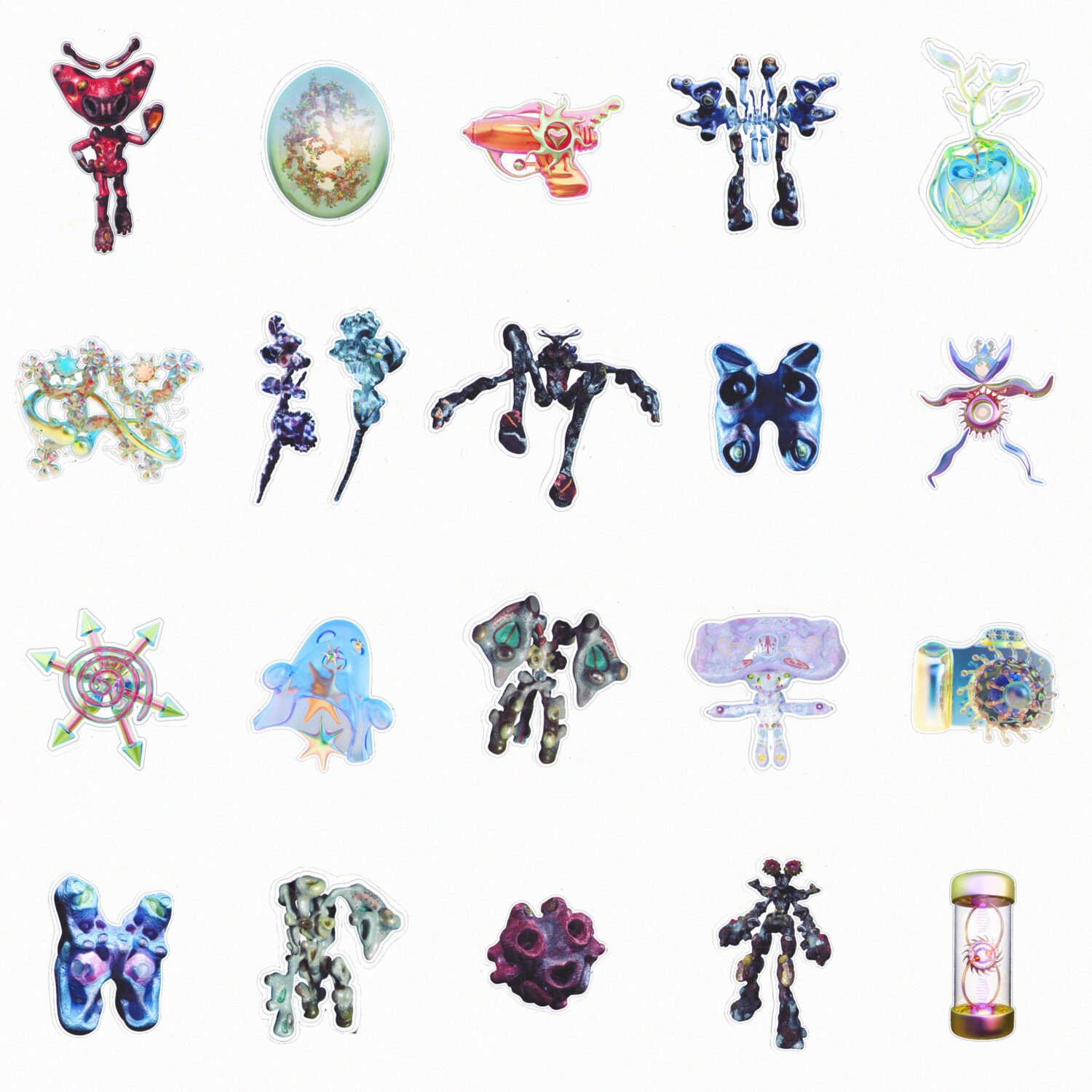Interview: LYZZA on “Critical Fabulation,” LimeWire and Collaborating with Gabriel Massan
By Keshav AnandOne of electronic music’s most promising new voices, Berlin-based Brazilian producer and vocalist LYZZA is pushing the genre’s boundaries through rigorous experimentation — her feet firmly set in the underground. She has just released an original soundtrack for Third World: The Bottom Dimension, a fantastical game-turned-immersive-exhibition developed by her friend and collaborator, Gabriel Massan. The project is a journey into a thought-provoking world, one that explores the Black Indigenous Brazilian experience as it intersects with the impacts of colonialism. The game, with LYZZA’s accompanying soundtrack, was on display at the Serpentine Gallery in London last year, cementing her as the youngest artist to have exhibited at the institution. On the occasion of the soundtrack’s official release, Something Curated’s Keshav Anand spoke with LYZZA to learn more about her work, collaborating with Massan, and what’s next.

Keshav Anand: I’m curious to learn more about your practice and how you got into making music.
LYZZA: I’ve loved music as long as I can remember, although it felt like a private practice as I don’t hail from a “creative” family. There were CDs and speakers in our house but for some reason neither of my parents played music growing up, and the sound system was always turned off. I think the sound system was one of my father’s prized possessions, which then was never used to preserve the item. In a way this juxtaposition of being in the presence of something whilst it wasn’t being utilised created a desire and longing that I started exploring by looking at CD covers and booklets, only hoping to one day be able to hear the music on these CDs. Growing up, through the discovery of LimeWire I started making stop motion video edits on Windows Movie Maker to music I was listening to.
Then, when I got my own laptop at the age of 15, I started layering music with spoken word poetry or interviews by artists in GarageBand — initially this was all for these video edits to make them more interesting, but slowly I started cutting up more and more stuff in GarageBand and ended up making edits and bootlegs of songs I liked and experimenting with my voice. I then started uploading these onto SoundCloud. About a year later I made my first EP, Powerplay, with Apple stock sounds and free VST’s I found online; I didn’t even have a microphone at the time so I would have to lift my laptop to my face and sing into it. Take the L featuring Shygirl was recorded on an iPhone. The rest is history I guess.
KA: Since you didn’t have visual references during the early stages, how did you first approach creating music for Third World: The Bottom Dimension? What cues helped guide you?
L: Gabriel Massan and I had extensive meetings about the context of the game as well as the stories being told within it and knew of each other — we both have a love for RPG games. Because of this my intuition wanted to have some of the playfulness present in old RPG games as well as Gabriel’s 3D work in the soundtrack. I had to tap into my own conviction and realise I was given this much space to fill in with my own narratives around feeling and sound because Gabriel trusted my perspective on the topics at hand — such as the Black Brazilian experiences of dealing with the impact of colonialism. The project succeeds my own work like MOSQUITO that has been in a way a response to these ideas. I needed to follow my gut instinct, trusting that whatever I was feeling, according to the written descriptions of the worlds I was scoring, would resonate.

KA: What was it like working closely with Gabriel Massan on this project?
L: Massan and I have actually been online mutuals since before they moved the Europe, and had collaborated on tour visuals for my 2018-2019 concerts. When they moved to Europe, they stayed with me in London for a couple of months and we built an amazing friendship. If anything, what was amazing about working on this together was the fact that our collaboration, which in total now spans over half a decade, was positioned more publicly this time. If anything, it represents a celebration of our friendship for me, and working closely together this time was also a reminder of that.
KA: The soundtrack reflects themes of Brazilian folklore as well as socio-economic realities in the region. How did you weave these complex narratives into your sonic output?
L: Processes like these are quite complicated to put into words, because it asks me to explain or describe my creative process which is something I, myself, still have to figure out. The way in which I try to achieve the best results is by being fully immersed into the themes — this means reading, researching, listening. You then hope that whatever gets excreted out of your brain with all this information fills in the gaps. There is also some of Castiel Vitorino Brasileiro’s storytelling and poetry weaved into the soundtrack, which was also written with these narratives in mind.
KA: Can you tell us more about the concept of “critical fabulation” and how it influenced the sound design for the game?
L: In essence, it’s the practice of taking historical facts, but using fiction to fill in gaps or create narratives around them. It weaved itself into the sound design by giving both me and Gabriel an opportunity to take cues from the research they had done whilst creating Third World: The Bottom Dimension, filling in gaps with our own expressions and feelings. Sound design for me is a pathway to liberation as it creates a new sonic space by pushing on sounds that have influenced us and have made us prior. I wrote more about this in my essay for Dweller.
KA: Third World has been exhibited internationally in major venues like the Serpentine Gallery and Pinacoteca do Estado de São Paulo. How does seeing your work in these spaces impact you creatively?
L: I’m very appreciative of the teams at Serpentine and Pinacoteca for amplifying us to more people who I think could walk away with a new thought. It might also completely change their lives from seeing and hearing our stories and our art. I ponder about this a lot, and I’ve come to the conclusion that sparking a new thought is a big aspect of my purpose. But, I don’t make my art for prestige or for institutions. I make music to connect with people.
KA: Are you able to tell us what you’re working on next?
L: More music, more beats.
KA: And what are you currently listening to — aside from your own work?
L: I’ve been listening to a lot of early Missy Elliot — Supa Dupa Fly.
Feature image: LYZZA. Photo: Kolja Tinkova